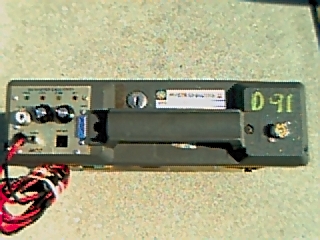
There’s no question, however, that fiber optic patch panels cost more. The primary role of the panels is to direct signal traffic rather than move signal at a required speed. While fiber is much faster than copper, networking professionals disagree on whether the materials show significant performance differences in patch panels. Patch panels can be part of networks with either fiber or copper cabling. In a business environment, patch panels are the smart way to quickly transfer communications lines from office to another. By centralizing cables in one place, patch panels make it easy for network administrators to move, add or change complex network architectures. For businesses, patch panels are often around found in areas that house telecommunications equipment and they play a central role in network functionality. Front-access panels work especially well in tight spaces. By using a front-access patch panel, for instance, you can get to all your cables and terminations easily. For most newer patch panel designs, the main focus is on cable management. The primary advantage of using patch panels, also known as patch bays, is improved organization and easier management of your wired network. They’re frequently used in industries that require extensive sound equipment because they work well for connecting a variety of devices. Troubleshooting problems are simplified with patch panels since they provide a single location for all input jacks. To arrange circuits using a patch panel, you simply plug and unplug the appropriate patch cords. Those lines, in turn, allow LANs to connect to wide area networks or to the Internet. When patch panels are part of a LAN, they can connect computers to other computers and to outside lines. Patch panels bundle multiple network ports together to connect incoming and outgoing lines - including those for local area networks, electronics, electrical systems and communications. Each port connects, via a patch cable, to another port located elsewhere in your building. So what is a patch panel you ask? A patch panel is essentially an array of ports on one panel. If you want to set up a wired network that includes multiple wall ports in various rooms, a patch panel in a central location can provide a simple, neat and easy-to-manage solution. But to take advantage of the blazingly fast Internet now available in most homes and businesses, a wired network often will allow you to achieve speeds much closer to the promised maximum. Stay within those parameters and you’re sure to enjoy all of the perks of a solid HDMI signal.These days, it seems that just about everything is wireless. The second thing is that this repeater works best with a maximum length of 60 feet from source to repeater and 45 feet from repeater to TV. There are clear labels by the HDMI ports that say either “input” or “output.” The cable coming from your Blu-ray, DVD, or other source goes into the input and the cable to your display goes into the output. The first is to make sure it is flipped the right way. There are two things to keep in mind when using the HDMI-EXTEND. You just plug in your cables and you’re ready to go. This basic coupler design means there’s no set-up. High-definition resolutions, HDCP compliance, and 3D playback are all left intact for the length of your run. You don’t have to sacrifice any of the advanced features of HDMI, either. Instead of a mere 50 feet to play with, this coupler can regenerate your signal for 115 feet or you could daisy-chain two of them and increase your run to 165 feet. Using only the native 5V power carried over HDMI, this small and unimposing extender can essentially double the distance you can send your signal. This HDMI repeater acts just like a regular coupler with female ports for connecting the ends of two cables. One of the easiest ways is FireFold’s HDMI-EXTEND. There are several different ways to do that. The job of HDMI repeaters and extenders is to train or push the signal to go farther. It doesn’t matter how long your cable is- if the signal can’t make it, you’ve got one high-tech jump rope. Resolution is usually the first to drop, followed by the sound or image. Depending on output strength, cable quality, and a number of other factors, you might find yourself losing signal before you get to where you’re going. HDMI is a sprinter, though, and not well-suited to marathon runs.


Paired with the newest LED televisions, it can certainly seem as though little slices of life are being beamed across time and space, directly onto your screen.

Digital pulses zoom over delicate wires, bringing you audio and video in sharp clarity and contrast. HDMI Extender (Repeater) 115ft 3D Ready Signal is as Signal Does


 0 kommentar(er)
0 kommentar(er)
